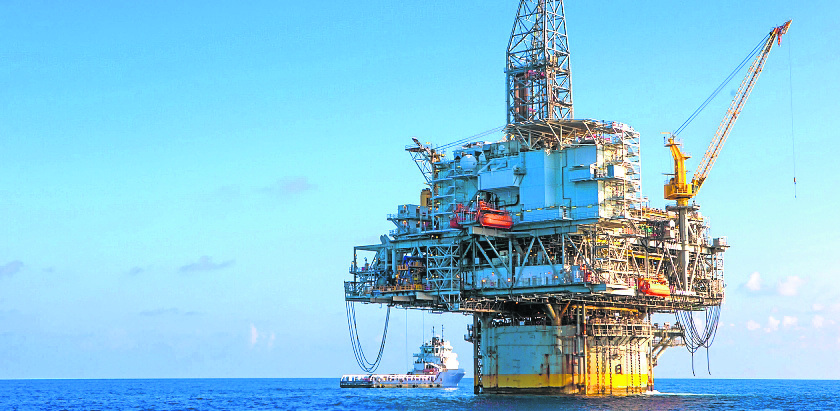
Oil firms are less than two years away from finding the final piece of the puzzle for unlocking the US Gulf of Mexico’s deepest bounty, an analyst has said.
Imran Khan, of energy consultancy Wood Mackenzie, said technology for unlocking ultra-high pressure reservoirs would do more to give operators “bang for their buck” than any other advancement.
Mr Khan, senior manager, Gulf of Mexico, said mastering the technology would “really get investment going again and get projects sanctioned”.
He said: “The Gulf of Mexico has fields containing 300-500million barrels of oil, but companies have been missing a piece of technology.
“They cannot quite develop them because of the high pressure. Industry was working hard to develop that before the downturn, but not much was done in 2015-16.
“But last year Chevron picked up the ball and started to move quickly to get that technology going.
“We’re maybe 18 to 24 months away from that piece of the puzzle being completed. That’s the next step change.”
Operators in the US Gulf of Mexico and the UK North Sea have been dealing with similar issues – high costs and a lack of exploration.
As with the UK, operators in the US Gulf of Mexico have made “great strides” in cutting costs during the downturn.
Mr Khan said: “A well that in 2014 cost $200-$225million to drill now costs $75-$100million.
“When we’re putting our models together we have to double and triple check the numbers, because the cost of wells has gone down so much.”

Another similarity between the regions is the common use of tiebacks to make new, smaller field developments economic. Tiebacks involve connecting new fields to existing platforms using pipelines – and are a cheaper alternative to building new rigs.
Mr Khan said: “Most of the projects in the Gulf of Mexico are now about subsea tiebacks. They just work. They address most of the challenges – they have a quick turnaround, and require less investment.”
But cost cuts could mean new platforms are worth considering again, in some cases.
Mr Khan said: “I recently spoke to an operator with fields which could be developed as standalone facilities or through tiebacks.
“I asked which way they were leaning. Usually the cost difference is huge. But the cost of facilities has come down so much, that they are now having a tough time deciding which way to go.
“Standalones would still be more expensive, but operators could be willing to pay more in order to retain control. That tells you just how much costs have come down.
“Maybe costs have come down enough to allow standalone installations to start competing with tiebacks.”
But, in general, the level of investment required for Gulf of Mexico projects is still too high compared with onshore shale. Only a very limited number of companies can take on large projects in the gulf.
The region does have several flagship projects.
Shell is progressing with the Appomattox field development and recently made a final investment decision on Vito.
BP’s phase two development of the Mad Dog field is one of the biggest in stature.
BP and its project partners went back to the drawing board on Mad Dog 2 in 2013 after deciding it would cost too much.
They managed to slash the costs, paving the way for a financial investment decision in December 2016.
Starlee Sykes, BP’s president for the US Gulf of Mexico and Canada regions, said: “At the peak of price cycle for oil and gas Mad Dog 2 was a $20billion project.
“We did a lot of work to reduce the cost to under $9billion. It’s still going to be a very large floating production unit, with 22 subsea wells on the field.”
Ms Sykes said about a third of the cost reductions were related to supply chain deflation, while the remaining two-thirds were down to measures implemented by BP and partners.
She said: “Quite a lot of the price reduction was not down to the oil price. We focused on value and looked at industry led solutions. Rather than having new requirements, we went back and looked at what industry has done before that would be more standard and fit for purpose.
“Lastly, we worked with Chevron and BHP to get their ideas. All of that put together led to about two thirds of it.”
In an update on Mad Dog 2, Ms Sykes said the project was “going really well”.
First steel has been cut for the new floating production platform at Samsung Heavy Industries in South Korea and good progress is being made on the drilling programme.
Ms Sykes said: “The next milestone is around tracking fabrication progress. Engineering is nearly complete so now we’re tracking the progress of the topsides and subsea aspects.
“We’ll just be watching those, and there is a whole range of milestones underneath that.”
Another parallel with the UK North Sea is the need for exploration to pick up.
March’s Gulf of Mexico lease sale put 60% more acreage up for grabs compared to the previous auction in August, making it one of the biggest rounds in history.
But competition was underwhelming.
It attracted 159 bids from 33 participating companies, with high bids totalling $124.8million.
The high-bids figure represented a modest increase of about $3million on August.
Mr Khan said: “The government was billing it as the largest lease sale based on acreage. But exploration is still slow. It’s in a lull.
“The current success rate is about 30%, so you’re going to drill a lot of dry holes before you find success. It’s hard to convince company executives to commit.”
The US Government could have tried to stimulate deepwater exploration by lowering royalty rates.
Last year rates for shallow water were cut to 12.5% from 18.75% and there was hope that deepwater would soon follow.
But Interior Secretary Ryan Zinke recently said deepwater royalty rates would not be reduced.
Mr Khan said: “An advisory board recommended that the Interior Department reduce its deepwater rates to 12.5% from 18.75%. Many industry observers believed this was a done deal especially given the tepid level of interest in the March lease sale.
“There was some hope that at the least the ultra-high-pressure, high-temperature (operating pressure of up to 20,000psi) discoveries would receive a break.
“There are over 2billion discovered barrels locked up in ultra-high-pressure reservoirs waiting to be developed but need some external to help improve the economics of these projects.
“Give it anther poor lease sale or two, and a strong showing from Mexico and Brazil, and a reduction will be back on the table.”
US President Donald Trump’s administration could hurt the sector with the imposition of tariffs on steel and aluminium imports.
On the financial implications, Mr Khan said: “People have been throwing around outrageous numbers. I don’t want to put a figure on the impact but I’ve been talking to operators and they are worried about it.
“They were happy when the tax rate was lowered but this has sucked some air out of that.”
Ms Sykes said: “We’re still evaluating the impact of the tariffs on BP but I think our view would be that free trade is always better.
“When you have complex, global supply chains, tariffs can’t help.”
Recommended for you
